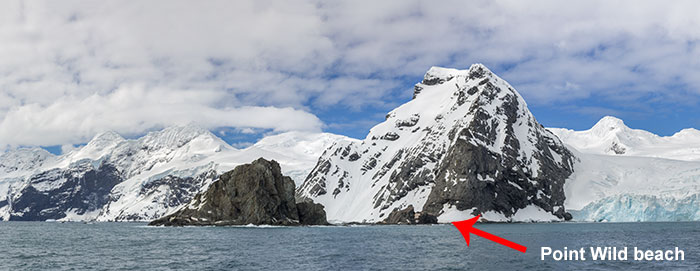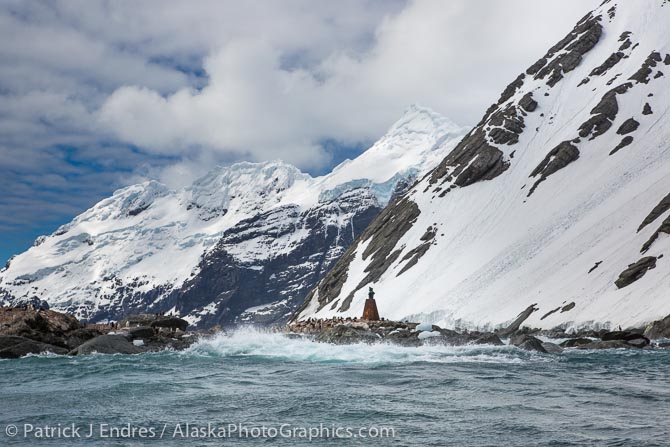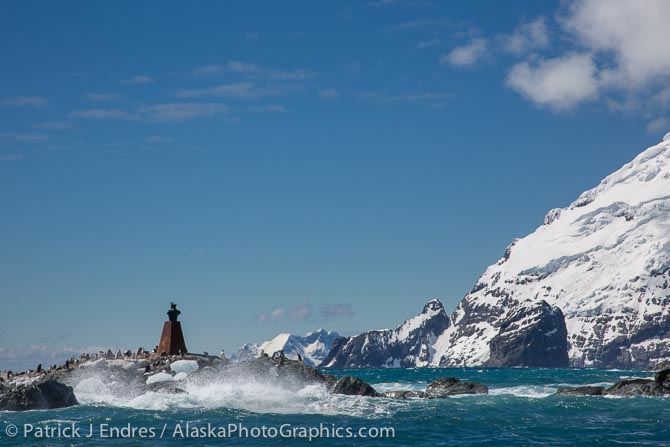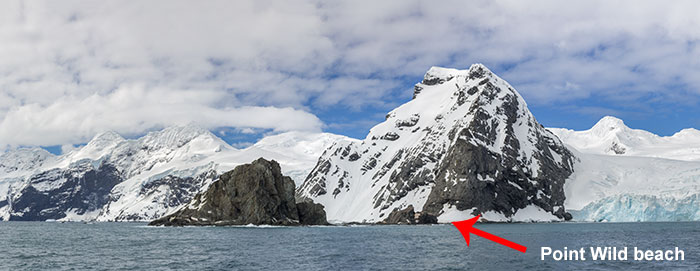Twenty three years ago, I read a book that would mark my mind forever. In the genre that my friend dubbed “explornography” Endurance, Shackleton’s Incredible Voyage, is an epic, gripping tale of survival and leadership. The Antarctic expedition ship “Endurance” gets crushed in the ice, the crew salvages parts and sails the southern ocean in make-shift boats. They land on the sheer, rocky face of Elephant Island, a tiny, rugged island in the Southern Ocean. The bulk of the crew survived there for four months while Ernest Shackleton and five others launched a small boat and crossed the perilous Drake Passage in search of help from the inhabitants of the distant South Georgia Island. If you have not read the book – put it on your list.
This year, on January 5, 2014, thick sea ice prevented our ship, the M/V Orteleus, from accessing the South Orkney Islands. We modified the itinerary and turned the bow toward Elephant Island. When I read that book, it did not even cross my mind that one day I might see that famous spot on Elephant Island, where sheer human determination and endurance carved the shape of survival. Our arrival, a day later, fell under rare, beautiful weather, giving us great views of the mountainous island. We headed for Point Wild, the exact location where the men from Shackleton’s expedition landed. The spot is named after Frank Wild, the second in command of Shackleton expedition.

The beach where the men from the Endurance Expedition survived on Elephant Island.
Even on a relatively calm day, it was too rough to land, so we passed by the rocky shore in Zodiacs, bobbing along in the swell of the great Southern Ocean as penguins porpoised nearby and seabirds hurled by in the wind. On shore, is a commemorative bust of the captain of the ship that eventually came to rescue the men–although most say the wrong person got the credit. It really is hard to apprehend the thought of living on that little rocky shore for four months, eating penguins and seals, and being subjected to the buffeting winds and storms so common to the area.

Waves crash along the shore on a calm day.
This encounter with history, and the place of this book in my own life makes the visit there a highlight of my voyage to Antarctica. In a land that is viscerally rough and unforgiving, full of wild and wide open spaces, the story of the Endurance expedition rises above all tales of epic survival and determination. It remains a reference point that the well of endurance is deeper than one might think, and it offers inspiration when life’s compression requires actions that seem beyond probability and possibility.

The bust commemorating the rescue of Shackleton’s men.







